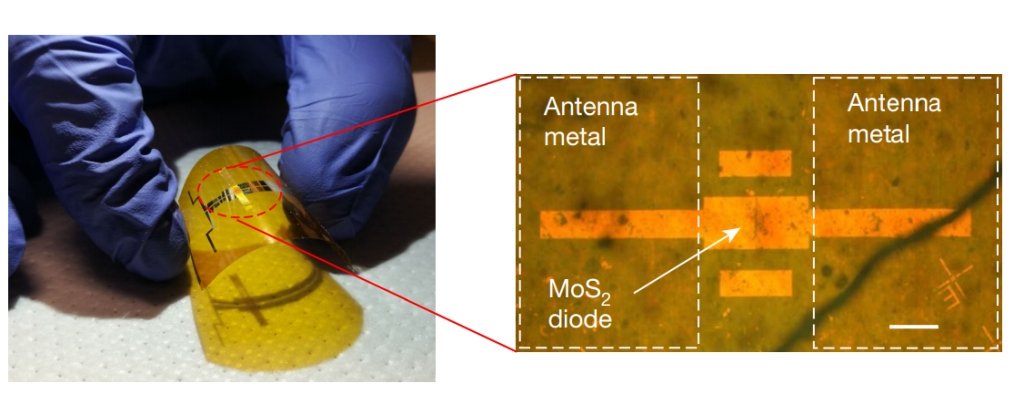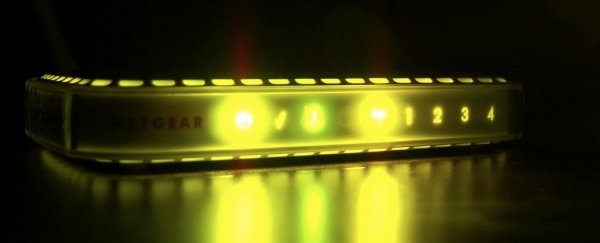We can probably all agree that charging cables are just the worst, and that we'd love to have fewer of them in our lives. Now, a new invention might give us just that: engineers have developed a flexible device that harvests energy from Wi-Fi signals.
And not just harvest. It can then convert it into electricity that could be used to power devices, wire- and battery-free.
The device is what is known as a rectenna - a portmanteau of 'rectifying antenna' - which is a type of antenna that converts electromagnetic energy into direct current (DC).
The new rectenna, from a team led by MIT and the Technical University of Madrid, uses a radio-frequency antenna to capture electromagnetic waves (such as those produced by Wi-Fi) as alternating current (AC) waveforms.
 (Zhang et al./Nature)
(Zhang et al./Nature)
These are sent to a two-dimensional semiconductor that converts them into DC, producing about 40 microwatts. It's not much, but is actually enough to power an LED or to drive silicon chips.
Because the rectenna is flexible, it can be deployed over large areas akin to wallpaper, or used in small, portable devices such as flexible smartphones, a field that is desperately trying to emerge. The tech could even be used in medical implants and swallowable sensors.
"Ideally you don't want to use batteries to power these systems, because if they leak lithium, the patient could die," said engineer Jesús Grajal of the Technical University of Madrid.
"It is much better to harvest energy from the environment to power up these small labs inside the body and communicate data to external computers."
This, to be clear, is not the first device that can convert energy from Wi-Fi into electricity. The idea has been around for some time, and engineers are continuing to tinker with it.
What the team has done to improve on it is the use of a different material for the rectifier - the part that converts AC into DC.
In previous rectennas, it's been made from a material such as silicon or gallium arsenide, which is not only rigid, but would also be expensive for large areas.
In the flexible rectenna, the team used molybdenum disulfide (MoS2). It's just three atoms thick, and, when exposed to certain chemicals, forces a phase transition between semiconductor and metallic material.
The structure is also known as a Schottky diode, mimicking the properties of the metal-semiconductor junction used in rectennas previously - producing a working rectenna that minimises parasitic capacitance, resulting in higher speed.
This means it can capture higher frequencies than other flexible rectifiers, which can't capture the gigahertz frequencies in which Wi-Fi operates.
"Such a design has allowed a fully flexible device that is fast enough to cover most of the radio-frequency bands used by our daily electronics, including Wi-Fi, Bluetooth, cellular LTE, and many others," explained engineer Xu Zhang of MIT.
And it's relatively low cost at larger scales, so it could be used for much bigger applications.
"What if we could develop electronic systems that we wrap around a bridge or cover an entire highway, or the walls of our office and bring electronic intelligence to everything around us? How do you provide energy for those electronics?" said engineer Tomás Palacios of the MIT/MTL Center for Graphene Devices and 2D Systems in the Microsystems Technology Laboratories.
"We have come up with a new way to power the electronics systems of the future - by harvesting Wi-Fi energy in a way that's easily integrated in large areas - to bring intelligence to every object around us."
The team is now working to build larger systems, and to improve the efficiency of their rectenna.
Their paper has been published in the journal Nature.
